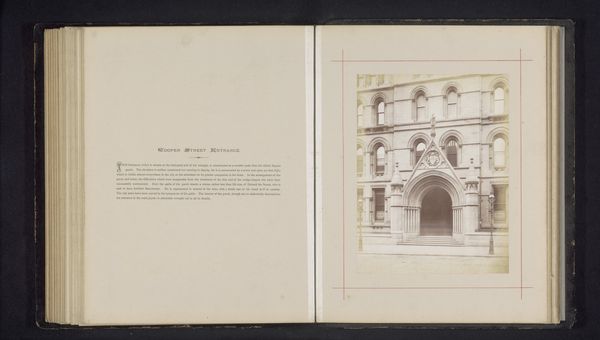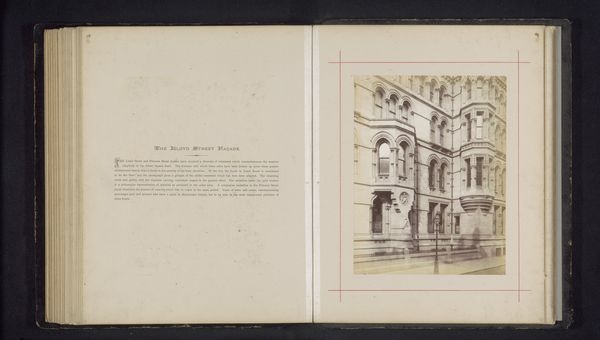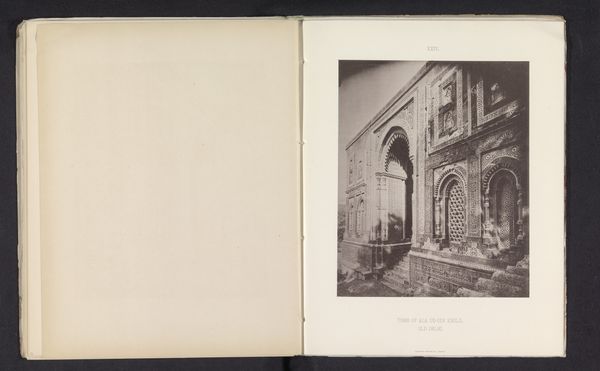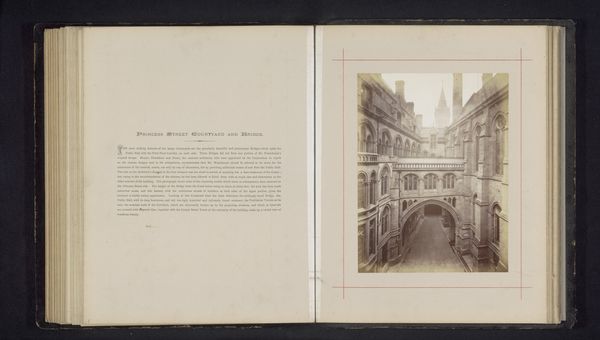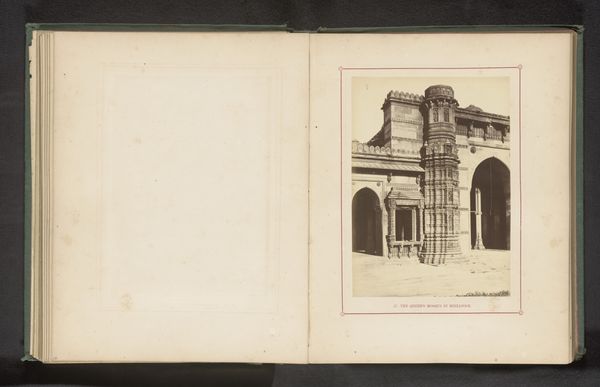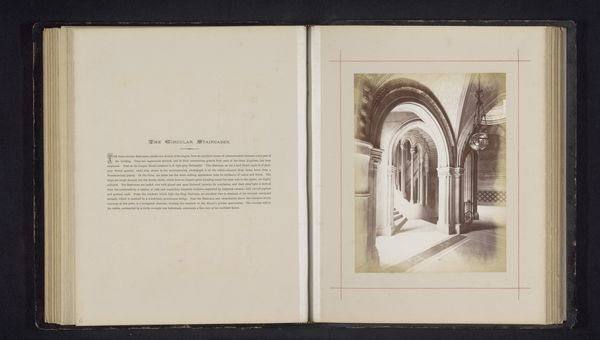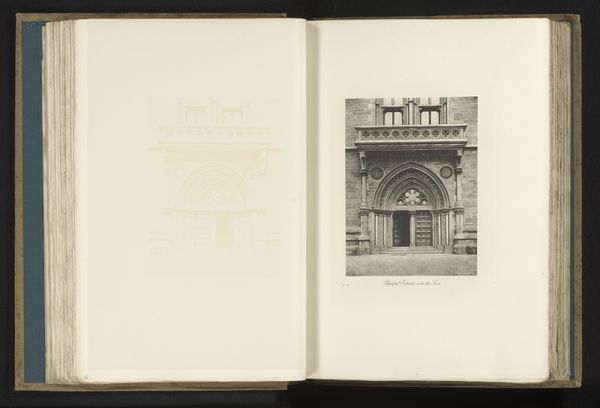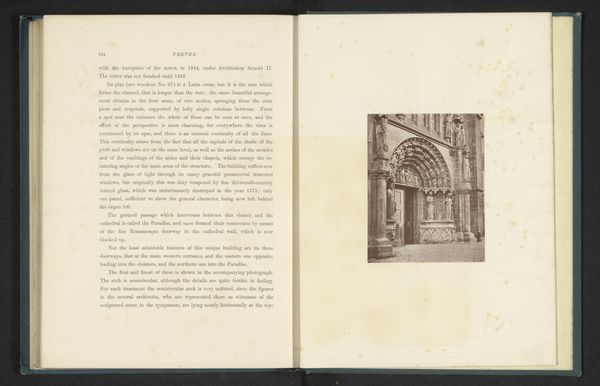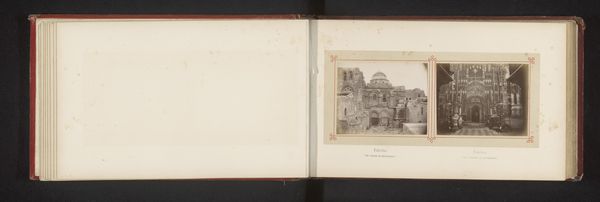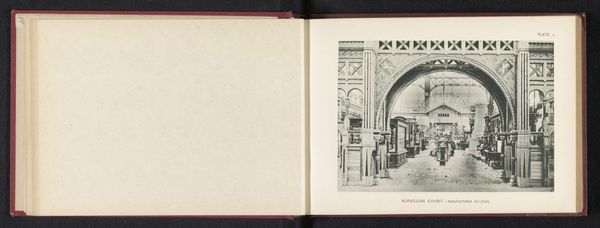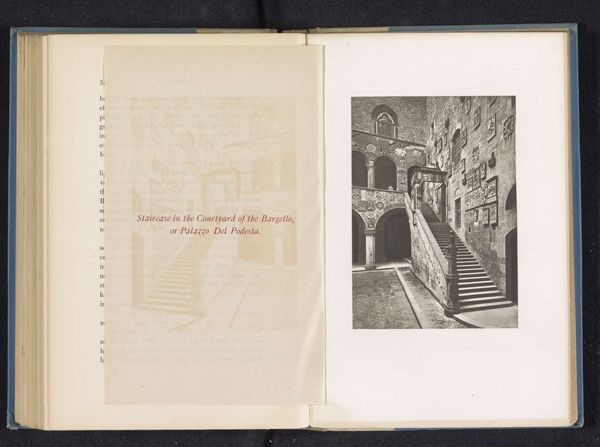
#
aged paper
#
homemade paper
#
paper non-digital material
#
paperlike
#
sketch book
#
personal journal design
#
personal sketchbook
#
journal
#
thin font
#
historical font
Dimensions: height 201 mm, width 150 mm
Copyright: Rijks Museum: Open Domain
Curator: This striking image, taken in 1877 by J. McLeod, captures the inner courtyard of the Manchester Town Hall, or as the text notes, "The Cooper Street Courtyard," with such detail. My first impression is how this book emphasizes civic pride in industrial cities, which needs greater highlighting today. Editor: I'm struck by the almost austere beauty. The monochromatic palette and the geometric repetition create this kind of formal severity, although the frame attempts a different reading. What was this printed on? Curator: The image and text exist within a bound volume resembling a personal journal or sketchbook, composed with paper-like material, possibly homemade. Editor: So it seems to position civic architecture within an accessible format, right? Given this publication choice, does McLeod's rendition evoke, for you, any feelings of confinement? Are we meant to think about enclosure? The frame around the image creates the opposite effect, highlighting space and freedom. Curator: Definitely. The architectural grandeur contrasts sharply with the journal format, perhaps prompting contemplation about civic spaces. Consider also the era—Manchester was grappling with industrialisation's consequences in 1877. This stately architecture stood, in some senses, as a solution or relief for some to social instability or displacement. Editor: Absolutely. The materials matter so much here – especially when considering what paper represented as a medium in this period and also the labour required to produce such high-quality paper. Curator: Agreed. And framing the photograph within a 'personal journal' implicates it directly into everyday life, extending the role and perceived value of architecture. We ought to consider the act of sketching buildings too – it is itself, after all, a process of imposing certain ideas, thoughts and ideals, over another. Editor: What seems especially compelling is how we perceive architecture in 1877 versus how we might perceive its documentation through images now, whether sketched or photographed. Considering its historical position helps contextualize that distance. It becomes so valuable because of what its materiality represents, as opposed to any technical value derived. Curator: Indeed. Considering our social landscape today, perhaps we ought to promote more inclusive narratives around public buildings, ensuring these are spaces reflective of more diverse identities, and hopefully recorded through equally accessible means! Editor: And the labour, materials, and resources expended should become central to that conversation, providing deeper insights into power dynamics during production and presentation.
Comments
No comments
Be the first to comment and join the conversation on the ultimate creative platform.
